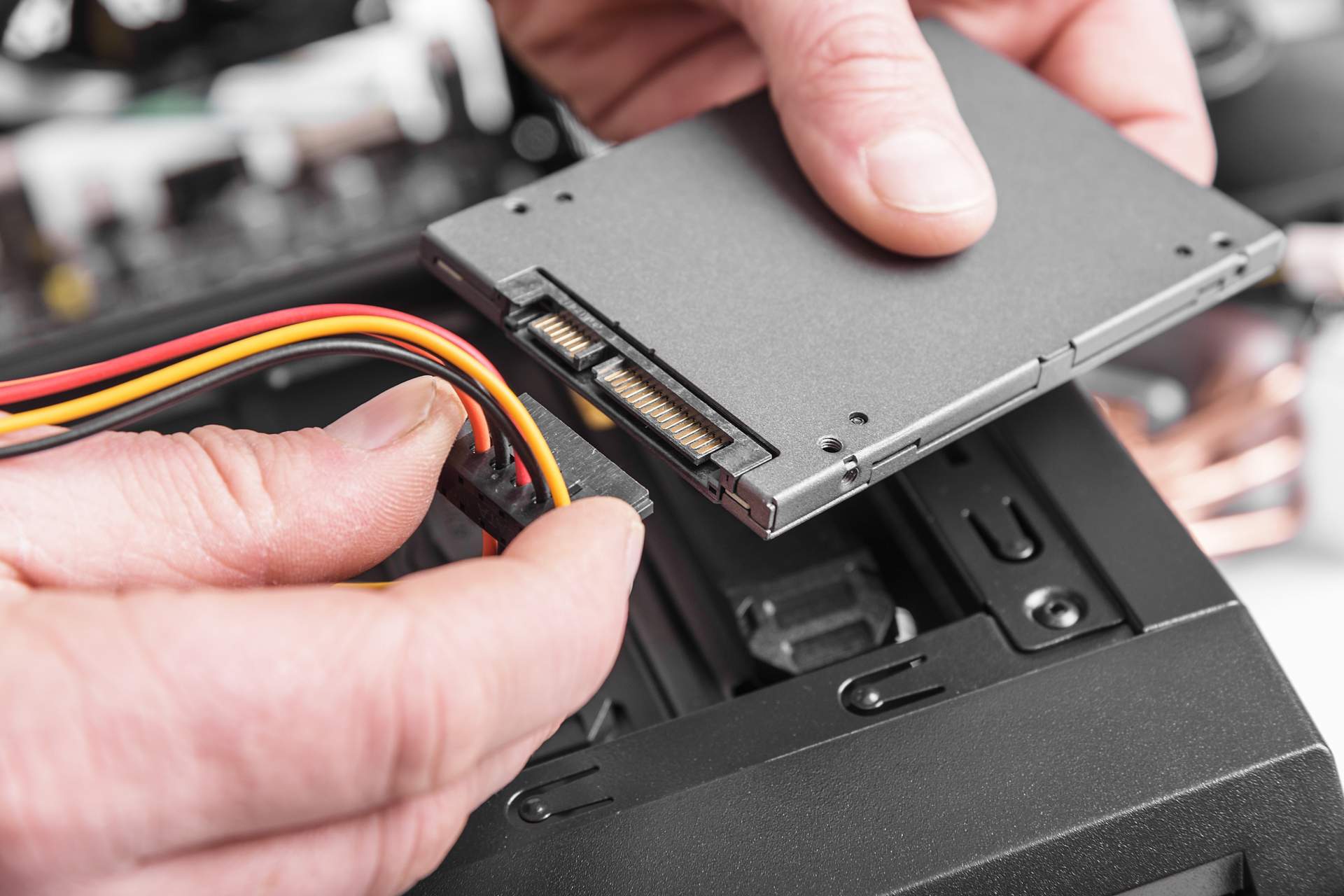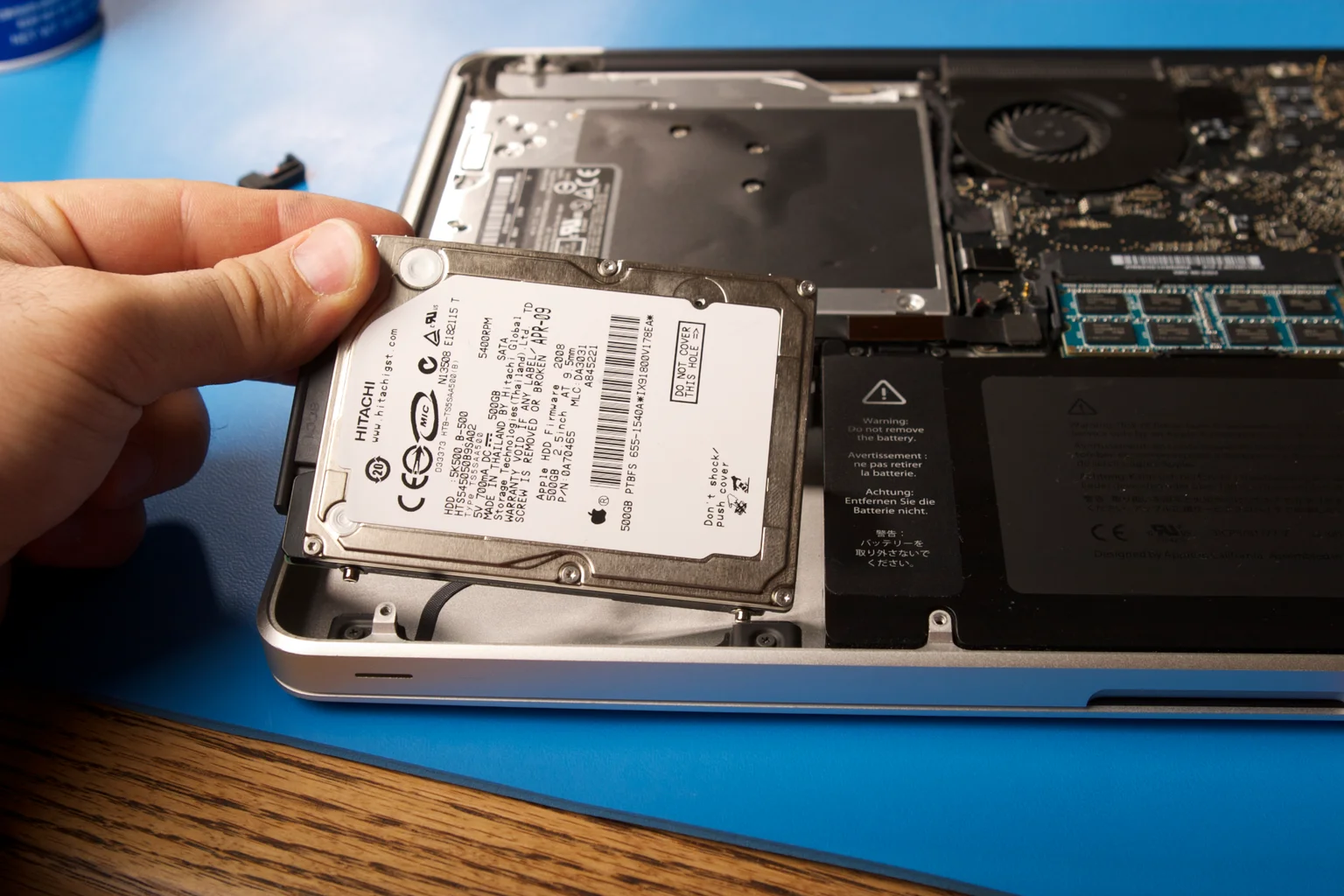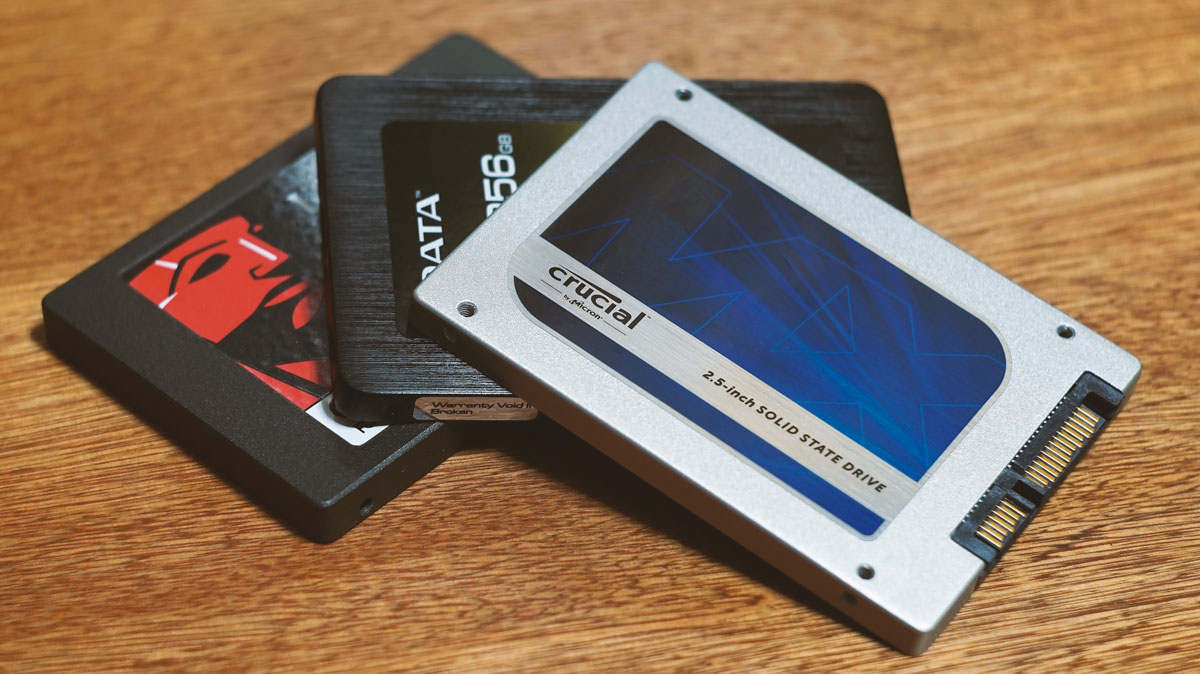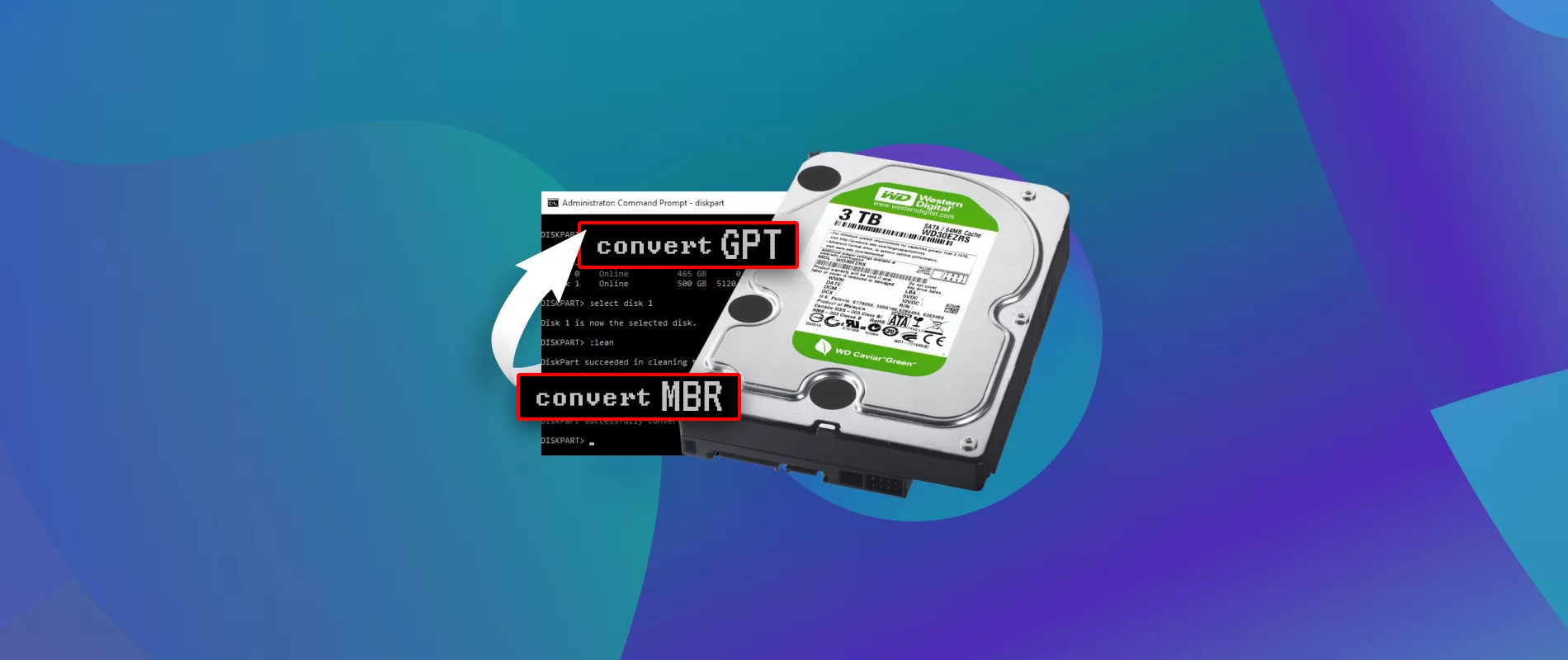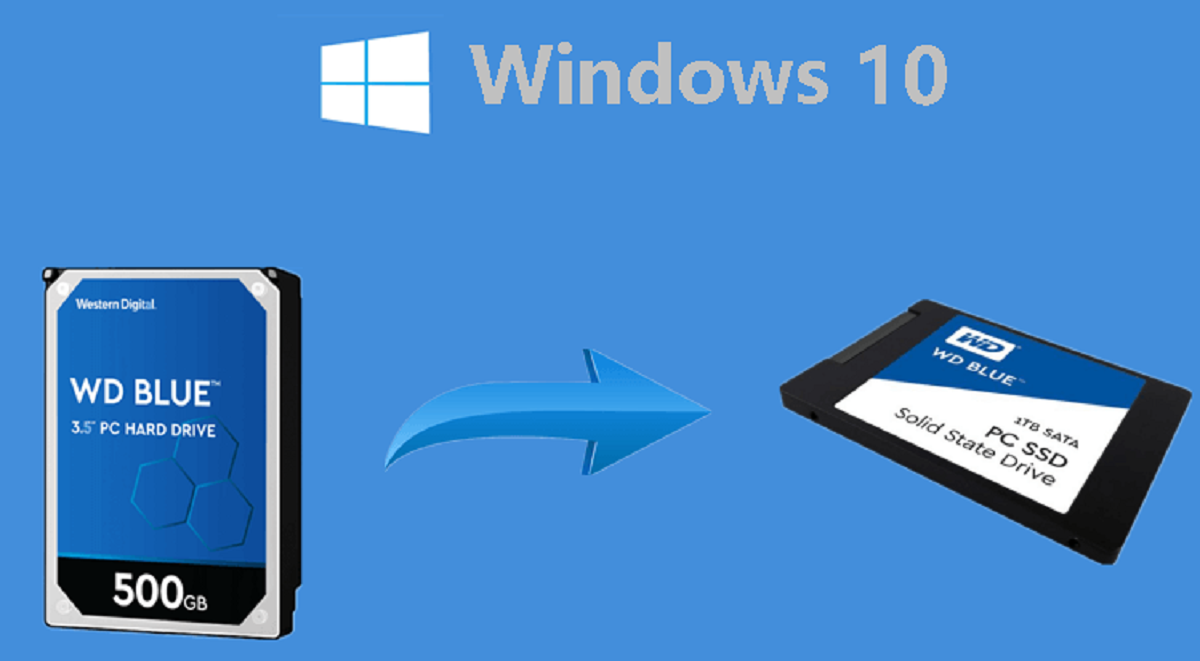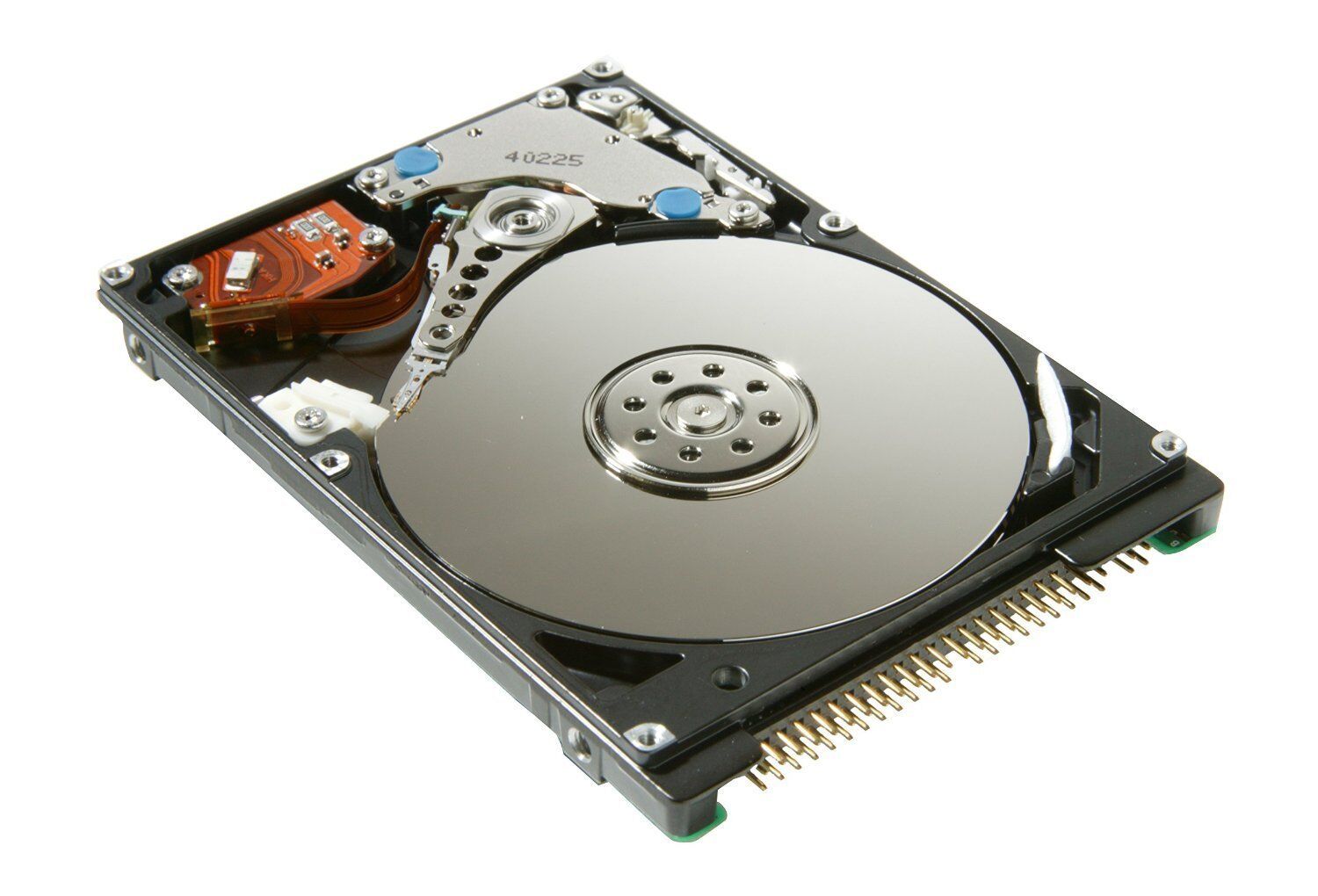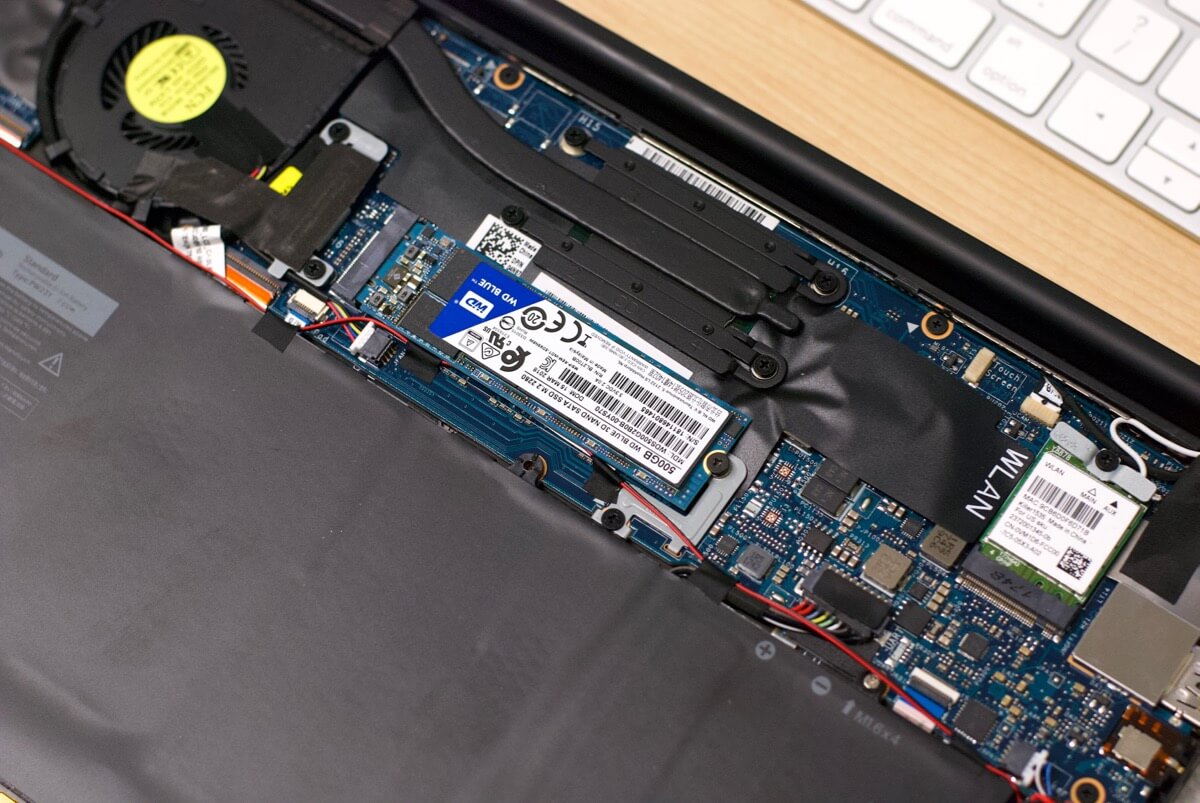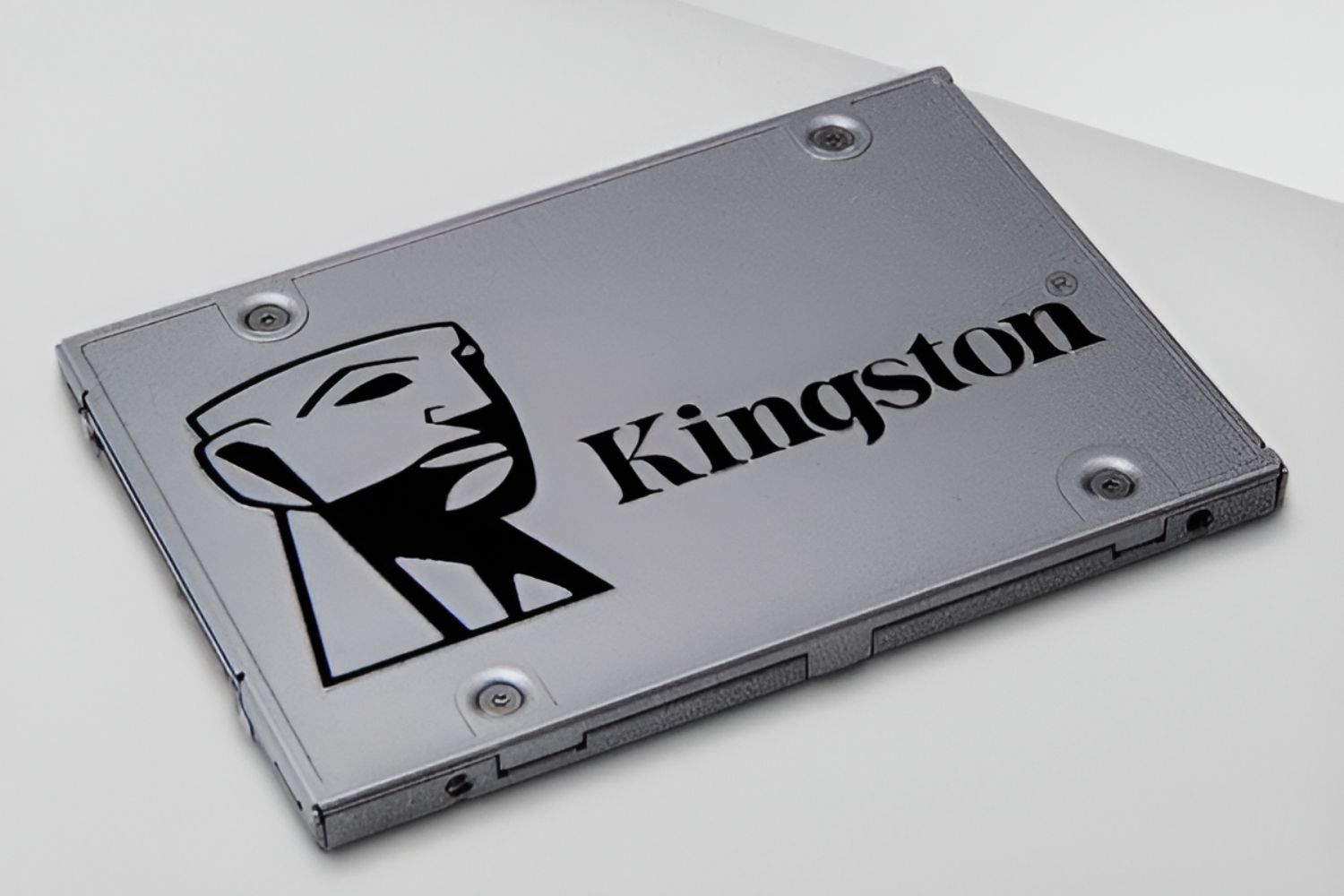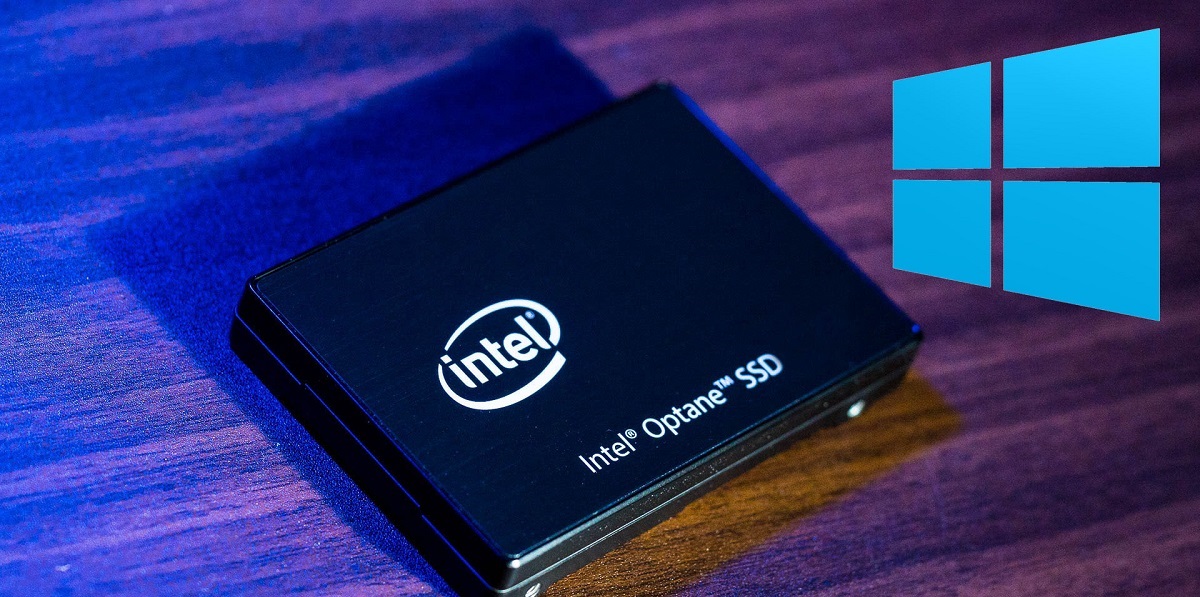Introduction
When it comes to booting up your computer, speed is key. Nobody wants to wait ages for their system to load and be ready to use. This is where a Solid State Drive (SSD) can make a significant difference.
An SSD is a type of storage device that uses flash memory to store data, offering faster performance and quicker access times compared to traditional hard disk drives (HDDs). While HDDs rely on spinning disks and mechanical moving parts, SSDs have no moving components, which results in improved speed and reliability.
In recent years, SSDs have gained immense popularity, making their way into laptops, desktops, and even gaming consoles. Their benefits are not limited to storage capacity; SSDs are also highly recommended for enhancing the booting experience.
So, why should you consider using an SSD for booting up your system? In this article, we will delve into the advantages of SSDs for booting and provide insights on choosing the right SSD for your needs. Additionally, we will guide you through the installation process and offer valuable tips on optimizing the booting performance of your SSD.
By the end of this article, you will have a thorough understanding of SSD booting and the steps you can take to improve the speed and efficiency of your system’s startup process.
What is a Solid State Drive (SSD)?
A Solid State Drive (SSD) is a type of storage device that has gained significant popularity in recent years. Unlike traditional hard disk drives (HDDs), SSDs do not rely on mechanical moving parts to read and write data. Instead, they use flash memory storage, similar to USB flash drives or memory cards.
How does an SSD work? Instead of using spinning disks to access data, SSDs use interconnected flash memory chips, which are faster and more reliable. This eliminates the mechanical limitations of HDDs, resulting in faster read and write speeds, reduced power consumption, and improved durability.
SSDs come in various form factors, including the common 2.5-inch size for laptops and desktops, as well as smaller M.2 and PCIe cards for high-performance applications. They offer a range of capacities, from a few hundred gigabytes to multiple terabytes, allowing users to choose the storage capacity that suits their needs.
One of the key advantages of SSDs is their speed. Unlike HDDs, which require time to spin up the disks and move the read/write heads to the specific location of the data, SSDs can quickly access any data stored on the flash memory chips. This results in significantly faster boot times, shorter application load times, and overall snappier system performance.
Another advantage of SSDs is their reliability. Since they have no moving parts, there is less risk of mechanical failure or damage due to physical impacts. This makes SSDs more durable, ensuring that your data remains safe even if your computer is accidentally dropped or bumped.
In terms of noise, SSDs are virtually silent because they do not produce any noise from spinning disks or moving components. This can be particularly beneficial for those working in quiet environments or using their computers for media production or audio recording.
While SSDs typically have a higher price per gigabyte compared to HDDs, their falling costs have made them more accessible to consumers. As a result, many users are now replacing their HDDs with SSDs, either as the primary storage drive or as a boot drive, to enjoy faster performance and overall system responsiveness.
Why Use an SSD for Booting?
When it comes to booting up your computer, speed is crucial. The booting process refers to the initialization and loading of the operating system into your computer’s memory. This initial startup sets the tone for the entire computing experience, and a speedy boot time can significantly improve overall productivity and user satisfaction.
So, why should you use an SSD for booting up your system?
First and foremost, SSDs offer significantly faster boot times compared to traditional hard disk drives (HDDs). The absence of moving parts in an SSD means that it can access data almost instantly, resulting in quick system startup. While HDDs require time to spin up and access the stored data, SSDs can instantly retrieve the required files, reducing the boot time to a matter of seconds.
Another reason to choose an SSD for booting is the improved reliability and durability they offer. With no spinning disks or mechanical components, SSDs are less prone to mechanical failures caused by physical impacts. They are also more resistant to temperature fluctuations and vibrations, making them suitable for portable devices or environments where stability is critical.
SSDs are also more energy-efficient than HDDs. Traditional hard drives require motors to spin the disks and move the read/write heads, consuming more power in the process. In contrast, SSDs consume less power, leading to improved battery life in laptops and reduced energy consumption in desktop computers. This is especially beneficial for mobile users who rely on their devices for extended periods without access to power outlets.
In addition to speed, reliability, and energy efficiency, the use of an SSD for booting enhances overall system performance. Since SSDs can read and write data more quickly, applications can launch faster, files can be opened and saved more efficiently, and the overall responsiveness of the system is significantly improved. This means you can spend less time waiting for your computer to catch up and more time getting things done.
Furthermore, an SSD reduces the noise generated by your computer. HDDs produce noticeable noise from spinning disks and moving read/write heads, whereas SSDs operate silently due to their lack of mechanical parts. This not only creates a quieter working environment but also makes SSDs ideal for media production or audio recording tasks where background noise can be intrusive.
With these benefits in mind, it’s clear why an SSD is a preferred choice for booting up your system. The combination of faster boot times, improved reliability, energy efficiency, enhanced performance, and quieter operation make SSDs a compelling option for users seeking a seamless and efficient computing experience.
Benefits of using SSD for Booting
Using a Solid State Drive (SSD) for booting up your system offers a range of benefits that can greatly enhance your computing experience. Let’s explore some of the key advantages of using an SSD for booting:
1. Faster boot times: One of the most noticeable benefits of using an SSD for booting is the significant improvement in boot times. Unlike traditional hard disk drives (HDDs), which require time to spin up and locate data on physical disks, SSDs have no moving parts and can access data almost instantly. As a result, your system can boot up in a matter of seconds, allowing you to get to work or play without delay.
2. Improved overall system performance: Along with faster boot times, using an SSD for booting also leads to improved performance across the board. Applications launch quicker, files open and save faster, and general system responsiveness is enhanced. Whether you’re multitasking, editing videos, or playing graphics-intensive games, an SSD ensures that your computer operates at its best.
3. Enhanced durability and reliability: SSDs have no mechanical components, making them more resistant to damage caused by physical impacts, temperature fluctuations, or vibrations. This increased durability translates to a longer lifespan for your storage drive, resulting in less frequent replacements or repairs. Additionally, the absence of moving parts also reduces the risk of drive failure due to wear and tear, making SSDs a reliable choice for booting.
4. Reduced power consumption: SSDs are more energy-efficient compared to HDDs. Since SSDs do not require motors to spin disks or move read/write heads, they consume less power during operation. This translates to improved battery life on laptops and reduced energy consumption on desktop computers. Not only does this benefit the environment, but it also allows you to use your device for longer periods without needing to recharge or connect to a power source.
5. Noise reduction: With no mechanical parts, SSDs operate silently. Unlike HDDs, which can produce noticeable noise from spinning disks and moving components, an SSD keeps your system quiet during boot and operation. This can be particularly advantageous if you work in a noise-sensitive environment or simply prefer a quieter computing experience.
6. Compact and lightweight design: SSDs are known for their smaller form factor, making them ideal for slim laptops, ultrabooks, and other devices with limited space. Their lightweight design is also advantageous for portable devices where reduced weight is a priority. So, if you’re looking for a storage solution that doesn’t compromise on performance while saving space and weight, an SSD is the way to go.
In summary, using an SSD for booting brings a host of benefits, including faster boot times, improved overall system performance, enhanced durability and reliability, reduced power consumption, noise reduction, and a compact and lightweight design. By upgrading to an SSD, you can transform your computer into a speedier, more efficient, and quieter machine, ensuring a seamless and enjoyable computing experience.
How Does an SSD Boot?
Understanding how a Solid State Drive (SSD) boots up your system can shed light on the speed and efficiency it brings to your computing experience. Unlike traditional hard disk drives (HDDs), which have spinning disks and mechanical components, SSDs use flash memory technology and a different booting process.
When you hit the power button on your computer, the system initializes and starts the booting process. The process begins with the system firmware (BIOS or UEFI) running a Power-On Self Test (POST), which checks the hardware components to ensure they are functioning properly.
Once the POST is complete, the firmware locates and loads the bootloader. The bootloader is a small piece of software responsible for recognizing the operating system stored on the SSD and starting its boot process.
At this point, the bootloader accesses the Master Boot Record (MBR) or the newer GUID Partition Table (GPT) on the SSD. The MBR or GPT contains information about the partitions and the location of the operating system’s boot files.
The bootloader then proceeds to load the operating system’s core files and initializes the necessary drivers and services. Once the core files are loaded, the operating system takes control and continues the boot process, initializing the rest of the system components and launching the user interface.
During this boot process, the SSD’s fast read and write speeds play a crucial role in reducing boot times. Unlike HDDs, which rely on spinning disks and moving read/write heads to access data, SSDs can rapidly retrieve data from the flash memory chips. This allows for quicker access to the necessary boot files and speeds up the overall booting process.
Additionally, SSDs benefit from their ability to perform random read operations in parallel. This means that SSDs can access multiple pieces of data simultaneously, further enhancing boot speeds by retrieving various system files concurrently.
It’s important to note that the booting process may vary slightly depending on the specific system firmware, bootloader, and operating system in use. However, the overall concept and advantages of SSD booting remain consistent.
In summary, the booting process on an SSD involves the system firmware running a Power-On Self Test (POST), loading the bootloader, accessing the MBR or GPT on the SSD, loading the operating system’s core files, and initializing the rest of the system components. Throughout this process, the fast read and write speeds of the SSD allow for quicker access to boot files, resulting in significantly reduced boot times and improved overall system performance.
Choosing the Right SSD for Booting
Choosing the right Solid State Drive (SSD) for booting is crucial to ensure optimal performance and compatibility with your system. Here are some factors to consider when selecting an SSD for booting:
1. Capacity: The capacity of the SSD determines how much data you can store on it. Consider the size of your operating system, applications, and files to determine the appropriate capacity. While larger capacities allow for more storage, keep in mind that SSDs with higher capacities tend to be more expensive.
2. Form Factor: SSDs come in different form factors, including the common 2.5-inch size for laptops and desktops, M.2 for ultrabooks and compact systems, and PCIe cards for high-performance applications. Ensure that the SSD you choose has a compatible form factor with your system’s interface (SATA, NVMe, or PCIe).
3. Speed: Consider the read and write speeds of the SSD. Generally, higher speeds indicate faster performance. Look for SSDs with high sequential read and write speeds, as well as high random read and write speeds, as these directly impact boot and application load times.
4. Endurance: Endurance refers to the total amount of data that can be written to an SSD over its lifespan. It is usually measured in terabytes written (TBW). Higher-endurance SSDs are recommended for systems that undergo frequent write activity, such as gaming or multimedia editing.
5. Brand and Reliability: Opt for reputable SSD brands known for their reliability and customer support. Look for SSDs with a proven track record and positive user reviews to ensure you are getting a reliable and durable product.
6. Price: Consider your budget when selecting an SSD for booting. SSD prices have become more affordable in recent years, but higher-capacity and higher-performance models will generally cost more. Determine the features that are essential for your needs and find a balance between performance and price.
7. Compatibility: Ensure that the SSD is compatible with your system’s interface (SATA, NVMe, or PCIe), as well as the operating system you plan to install. Check the manufacturer’s specifications and compatibility lists to avoid any compatibility issues.
8. Warranty: Look for SSDs that come with a warranty. A longer warranty period signifies the manufacturer’s confidence in the product’s quality and reliability. This protects you in case of any defects or failures that may occur during the warranty period.
Taking these factors into account allows you to choose an SSD that meets your requirements for capacity, speed, endurance, reliability, compatibility, and price. By selecting the right SSD for booting, you can ensure a smooth and efficient booting experience, as well as improved overall system performance.
Installing an SSD for Booting
If you’ve decided to upgrade your system by installing a Solid State Drive (SSD) for booting, follow these steps to ensure a successful installation:
1. Backup your data: Before making any changes to your system, it’s essential to backup your data to ensure you don’t lose any important files or documents. This can be done by transferring your files to an external hard drive, using cloud storage, or creating a system image.
2. Gather the necessary tools: Depending on your system, you may need specific tools to install the SSD. Common tools include a screwdriver, SATA or M.2 screws, and an external drive enclosure (if you plan to clone your existing drive).
3. Prepare the SSD: If your SSD is new, you may need to format it or initialize it before installation. Consult the manufacturer’s instructions or refer to your operating system’s documentation for guidance on preparing the SSD for use.
4. Physically install the SSD: Open your computer’s case and locate an available hard drive bay or M.2 slot. Mount the SSD securely using the provided screws. Connect the SSD to the appropriate connector (SATA or M.2) on the motherboard, ensuring a secure connection.
5. Clone or Install the operating system: Depending on your preference, you can either clone your existing drive to the SSD or perform a fresh installation of the operating system. Cloning allows you to replicate your entire system onto the SSD, including the operating system, applications, and files. Fresh installation, on the other hand, provides a clean start with only the necessary files and software installed.
6. Set the SSD as the boot drive: Once the SSD is properly connected and the operating system is installed, enter the BIOS or UEFI settings by pressing the designated key during startup. Locate the boot priority settings and set the SSD as the primary boot drive. Save the changes and exit the BIOS/UEFI.
7. Test the SSD boot: Restart your computer and ensure that it successfully boots from the SSD. Check the boot times and overall system performance to confirm that the SSD is functioning correctly.
8. Additional configurations: After the SSD is installed and the operating system is booting properly, you can customize the settings according to your needs. This may include optimizing the SSD’s performance, enabling trim function, and adjusting power management settings.
9. Securely dispose of the old drive (if applicable): If you have replaced your existing hard drive with the SSD, make sure to securely wipe or dispose of the old drive to protect your data. You can use data erasure software or physically destroy the drive to ensure no sensitive information remains.
Following these steps will enable you to successfully install an SSD for booting, allowing you to benefit from faster boot times and improved system performance. It’s always advisable to refer to your specific system and SSD manufacturer’s documentation for detailed instructions that align with your hardware configuration.
Tips for Optimizing SSD Booting Performance
While Solid State Drives (SSDs) offer fast booting times compared to traditional hard disk drives (HDDs), there are several tips you can follow to optimize the booting performance of your SSD and further enhance your system’s startup speed. Consider the following tips:
1. Enable AHCI mode: Ensure that your computer’s BIOS/UEFI is set to AHCI (Advanced Host Controller Interface) mode. This mode allows the SSD to fully utilize its capabilities and ensures optimal performance.
2. Update firmware and drivers: Regularly check for firmware updates for your SSD from the manufacturer’s website. These updates often improve compatibility, reliability, and performance. Similarly, keep your system’s drivers up to date to ensure smooth operation and optimal performance.
3. Disable unnecessary startup programs: Minimize the number of programs that launch at startup. Disable unnecessary apps or services that may unnecessarily consume resources and slow down the booting process. You can manage startup programs through the Task Manager (Windows) or System Preferences (Mac).
4. Enable fast startup (Windows only): Windows 10 offers a feature called Fast Startup, which uses a combination of hibernation and traditional shut down to speed up the boot process. Enable this feature in the Power Options settings to reduce boot times.
5. Optimize SSD partition alignment: Ensure that the SSD’s partitions are aligned correctly, as misalignment can impact performance. Use a partitioning tool that supports aligning partitions to the optimal alignment for your SSD, usually 4096-byte sectors.
6. Disable disk defragmentation: SSDs do not require defragmentation like HDDs do. In fact, running defragmentation on an SSD can reduce its lifespan. Disable automatic defragmentation in your operating system’s settings to avoid unnecessary wear on the SSD.
7. Enable TRIM: TRIM is a command that allows the SSD to efficiently manage deleted data blocks, improving write performance over time. Make sure that TRIM is enabled in your operating system’s settings to maintain optimal SSD performance.
8. Regularly clean up and optimize your system: Perform regular system maintenance tasks such as clearing temporary files, removing unused applications, and running disk cleanup utilities. This helps keep your system lean and maintains optimal performance.
9. Keep adequate free space on the SSD: To ensure optimal performance, leave enough free space on your SSD. Aim to have at least 10-20% of the total capacity as free space. This allows the SSD to perform wear leveling and ensures that write speeds remain high.
10. Avoid excessive writes: While modern SSDs have a high endurance, reducing unnecessary write operations can prolong the lifespan of the drive. Avoid excessive disk activity, unnecessary data logging, and constant file indexing to minimize wear on the SSD.
By following these tips, you can optimize the booting performance of your SSD and ensure a speedy and efficient system startup. Remember to regularly maintain your system and stay updated with the latest firmware and driver updates for your SSD to continue enjoying the benefits of faster boot times and improved overall performance.
Conclusion
Upgrading to a Solid State Drive (SSD) for booting is a worthwhile investment that can significantly enhance your computer’s performance and speed. The key benefits of using an SSD for booting include faster boot times, improved overall system performance, enhanced durability and reliability, reduced power consumption, noise reduction, and a compact and lightweight design.
When choosing an SSD for booting, consider factors such as capacity, form factor, speed, endurance, brand reliability, price, and compatibility. Taking these into account will ensure that you select an SSD that meets your requirements and offers seamless integration with your system.
Installing an SSD for booting involves backing up your data, preparing the SSD, physically installing it, cloning or installing the operating system, setting the SSD as the boot drive, and testing the boot process. Following these steps will enable you to enjoy the improved speed and efficiency brought by the SSD.
To further optimize the booting performance of your SSD, consider enabling AHCI mode, updating firmware and drivers, disabling unnecessary startup programs, enabling fast startup (Windows only), optimizing SSD partition alignment, disabling disk defragmentation, enabling TRIM, regularly cleaning up and optimizing your system, keeping adequate free space on the SSD, and avoiding excessive writes.
By implementing these tips, you can unlock the full potential of your SSD for booting, ensuring a faster, more efficient, and enjoyable computing experience.
So, if you’re tired of waiting for your computer to boot up, it’s time to consider upgrading to an SSD. The benefits of faster boot times, improved system performance, and overall reliability make it a valuable investment. Start enjoying the speed and efficiency of an SSD for booting today!







